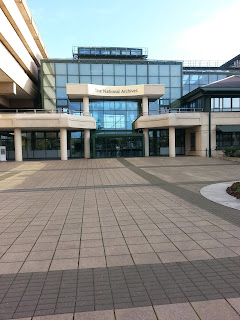On Christmas
Day 1536 the Mayor of Hull, William Rogers had a visitor. The visitor went by
the splendid title of Rouge Dragon Pursuivant and he was a messenger from King
Henry VIII. He had something for the Mayor: a General Pardon for all the
inhabitants of Hull (and indeed for the rest of the North of England) for
rebelling against the King during what is now known as the Pilgrimage of Grace.
The
Pilgrimage of Grace had been a huge challenge to the Henry’s authority and his
religious changes. The rebellion had started in Lincolnshire in October 1536
and soon spread to Yorkshire and much of the rest of the North. Thousands of
people were in revolt. On 15 October a group of them laid siege to Hull, and on
20 October the authorities in Hull negotiated the town’s surrender. It can’t
have been a comfortable feeling for the Mayor and his colleagues, knowing that
they had abandoned the King, however reluctantly, and handed the King’s Town
over to the rebels.
So the news
of a General Pardon to everyone who’d rebelled must have come as a relief to
the Mayor. The Pardon was issued by the King on 9 December after the rebels and
government representatives had negotiated a truce at Doncaster and the
insurgents dispersed.
 |
| General Pardon (ref C BRH/5) |
The document
took over a fortnight to arrive in Hull. In it the King pardoned everyone for
“all maner treasons, rebellions, insurrections…” and gave permission for
individuals to request their own specific pardons. Copies went to all the
counties in the North, including Hull, then a county of itself. It didn’t
arrive unscathed; at some point the seal had been torn off, and subsequently
stitched back on. We know this because Rouge Dragon or whoever also attached a
little note, in Latin, recording the damage and repair, and noting that the
Pardon had been delivered on Christmas Day.
The receipt
of the Pardon wasn’t the end of the story of the Pilgrimage of Grace however.
Events in Hull a few weeks later on 16 January 1537, when a little group of rebels
under the command of John Hallam from Cawkeld near Hutton Cranswick tried to
seize the town on market day, gave Henry the excuse he need to crush the rebels
and ignore his own Pardon. Poor Hallam ended up hanged in chains on Hull’s
Beverley Gate.
On which
note…all the staff at Hull History Centre would like to wish all our visitors a
Merry Christmas, with the hope that none of you get a Christmas present from
anyone as terrifying as Henry VIII!
Martin Taylor
City Archivist










































